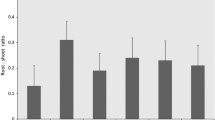Abstract
Ten multipurpose tree species, Terminalia arjuna, Azadirechta indica, Prosopis juliflora, Pongamia pinnata, Casuarina equisetifolia, Prosopis alba, Acacia nilotica, Eucalyptus tereticornis, Pithecellobium dulce and Cassia siamea, were raised in a monoculture tree cropping system on the sodic soil of Gangetic alluvium in north India (26° 47′ N: 80°46′ E) for 10 years to evaluate the biomass and bio-energy production. The soil was compact, sodic and impervious to water associated with nutrient deficiency or toxicity. Maximum plant height was recorded with E. tereticornis followed by C.equisetifolia and P. juliflora. A. nilotica performed better than the other species in terms of diameter at breast height (DBH) with a basal area of 13.04 m2·ha−1, followed by P. juliflora and C. equisetifolia. P. juliflora and A. nilotica produced nearly similar biomass of 56.50 and 50.75 Mg·ha−1, respectively, at 10 years; whereas, A. indica, P. pinnata, C. siamea and P. alba did not perform well. P. juliflora scored maximum in net biomass production and nutrient demand. Nutrient (N, P, K, Ca, and Mg) concentrations were higher in leaf component of P. juliflora. However, in woody components, there was little variation between the species. N removal for production of one ton of wood was lowest in Acacia nilotica, P in T. arjuna, K in P. dulce and Ca and Mg in P. juliflora. P. juliflora gave the highest energy production of 1267.75 GJ·ha−1 followed by A. nilotica with 1206 GJ·ha−1 and the lowest of A. indica (520.66 GJ·ha−1).
Similar content being viewed by others
References
Brady NC. 1990. The nature and Properties of Soils. New York: Macmillan publishers
Chaturvedi AN. 1987. Afforestation of salt affected soils. In: T.N. Khoshoo, (ed.), Eco-development on Alkaline Lands. New Delhi: Publication Information Directorate, Pp. 101–102.
Chaturvedi AN, Beh, HM. 1996. Biomass production trials on sodic site. Indian Forester, 122: 439–455.
Diaz R, Karlin UO, Rossi C. 1984. Inform de avance. Influencia del dosel de algarrobo sobre la oferta forrajera,” III Reunion de Intercambio Technologico en Zona Aridasy Semiaridas, Catamarca, pp.128–135.
Driessche RVD. 1974. Prediction of mineral nutrient status of trees by foliar analysis. Botanical Review, 40: 347–394.
Garg VK, Jain RK. 1992. Influence of fuel wood trees on sodic soils. Canadian Journal of Forest Research, 22: 729–35.
Gill HS, Abrol IP. 1986. Salt affected soils and their amelioration through afforestation. In: R Princely, T. and swift, M.J. (Eds.), Amelioration of soil by trees,. Commonwealth Science Council London, pp. 43–53.
Gill HS, Abrol, IP, Gupta RK. 1990. Afforestation of salt affected soils. In: Technologies for Wasteland Development. New Delhi: ICAR, pp.355–380.
Jackson ML. 1967. Soil Chemical Analysis. New Delhi: Prentice Hall of India, Pp. 183–226.
Jain RK. 1995. Tolerance of tree species at varying levels of soil exchangeable sodium, percentage. Range Management and Agro forestry, 16: 95–102.
Kalra YP, Maynard. 1991. Methods manual for Forest and Plant Analysis. Information Report Nor-X-319. Forest Canada Northwest Region, Northern Forestry Center. Edmonton, Alberta, Canada.
Lea R, Tierson WC, Bickelhaupt DH, Leaf AL. 1979. Stand treatment and sampling time of hardwood foliage. Plant Soil, 51: 515–533.
Lugo AE, Wang D, Borman FH. 1990. A comparative analysis of biomass production in five tropical tree species. Forest Ecology and Management, 31: 153–166.
National remote Sensing Application and Associates (NRSA & Associates). 1996. Mapping of salt affected soils of India, 1: 250,000 map sheets, Legend. NRSA Hyderabad, INDIA
Naidu R, Rangasamy P. 1993. Ion interaction and constraints to plant nutrition in Australia sodic soils. Australian Journal of Soil Research, 31: 800–819.
Singh, B. 1982. Nutrient content of standing crop and biological cycling in Pinus patula ecosystems. Forest Ecology and Management, 4: 317–332.
Singh B. 1998. Biomass production and nutrient dynamics in three clones of Populus deltoids planted on Indo-gangetic plains. Plant and Soil, 2(3): 15–26
Singh B. 1989. Rehabilitation of alkaline wastelands on the Gangetic alluvial plains of Uttar Pradesh, India through afforestation. Land Degradation and Rehabilitation, 1: 305–310.
Singh G, Gill HS. 1992. Ameliorating effect of tree species on characteristics of sodic soils at Karnal. Indian Journal of Agricultural Science, 62: 142–146.
Singh G, Singh NT, Tomar OS. 1993. Agro forestry in salt affected soils. Research Bulletin, CSSRI, Karnal, P. 65
Singh KP, Mishra R. 1978. Structure and functioning of Natural, Modified and Silvicultural Ecosystems of Eastern Uttar Pradesh. Technical report, UNESCO programme on Man and the Biosphere. Indian MAP Research Committee, Contribution of Research project-1, Banaras Hindu University, Varanasi, India, pp. 161.
Singh K, Yadav JSP, Singh V. 1992. Tolerance of trees to soil sodicity. Journal of the Indian Society of Soil Science, 40: 173–179.
Sanchez PA, Palm CA, Davey CB, Szott LT, Russell CE. 1985. Tree crops as soil improver in the humid tropics. In: Cannel, M. & J.E. Jackson (eds.) Attributes of Trees As Crop Plants. Institute of Terrestrial Ecology, Huntington, Pp. 327–358.
Singh V, Toky OP. 1995. Biomass and primary productivity in Leucaena, Acacia and Eucalyptus, short rotation high density (energy) plantation in arid India. Journal of Arid Environment, 31: 301–309.
Tripathi KP, Singh B. 2005. The Role of Revegetation for rehabilitation of sodic soils in semi arid subtropical forest. Restoration Ecology, 13(1): 29–38
Toth B. 1981. Afforestation on salt affected soils in Hungary. Agrokemia Telajtan, 30: 205–12.
Wang D, Bormany FH, Lugo AE, Bowden RD. 1991. Comparison of nutrientuse efficiency and biomass production in five tropical tree taxa. Forest Ecology and Management, 46: 1–21.
Yadav JSP, Singh K. 1970. Tolerance of certain forest tree species to varying degree of salinity and alkalinity. Indian Forester, 96: 587–599.
Yadav JSP. 1975. Improvement of saline-alkali soils through biological methods. Indian Forester, 101:385–395.
Yadav JSP. 1980. Salt affected soils and their afforestation. Indian Forester, 106: 259–272.
Author information
Authors and Affiliations
Corresponding author
Rights and permissions
About this article
Cite this article
Singh, Y.P., Singh, G. & Sharma, D.K. Biomass and bio-energy production of ten multipurpose tree species planted in sodic soils of indo-gangetic plains. Journal of Forestry Research 21, 19–24 (2010). https://doi.org/10.1007/s11676-010-0003-5
Received:
Accepted:
Published:
Issue Date:
DOI: https://doi.org/10.1007/s11676-010-0003-5




